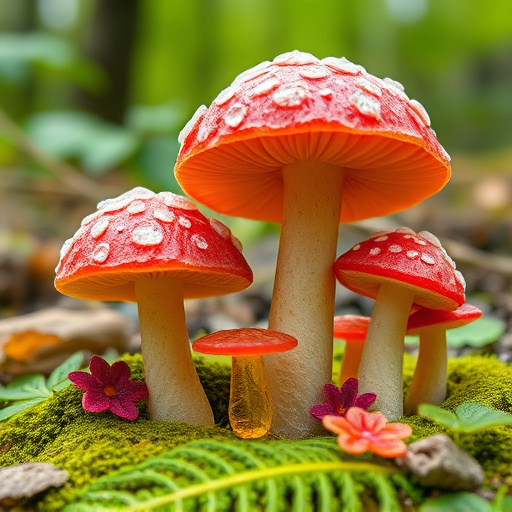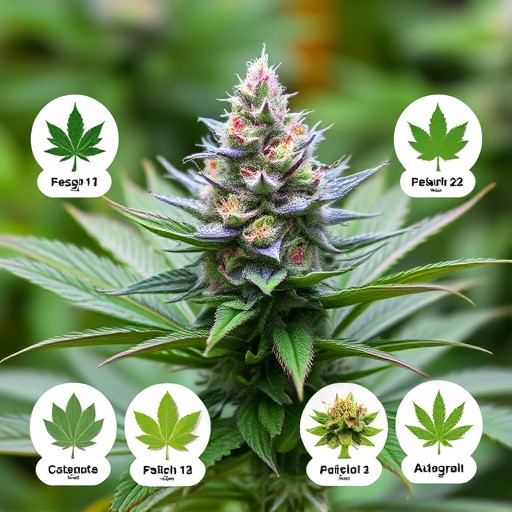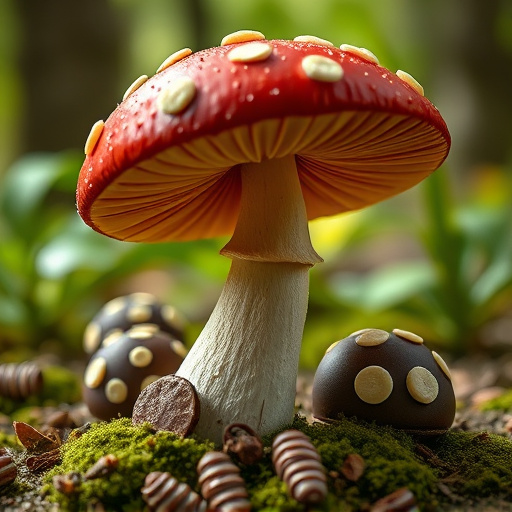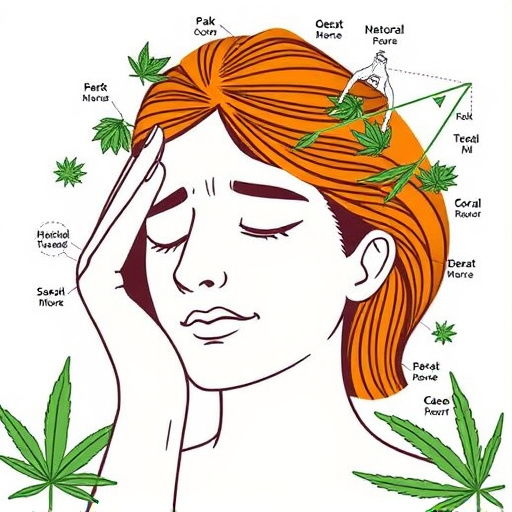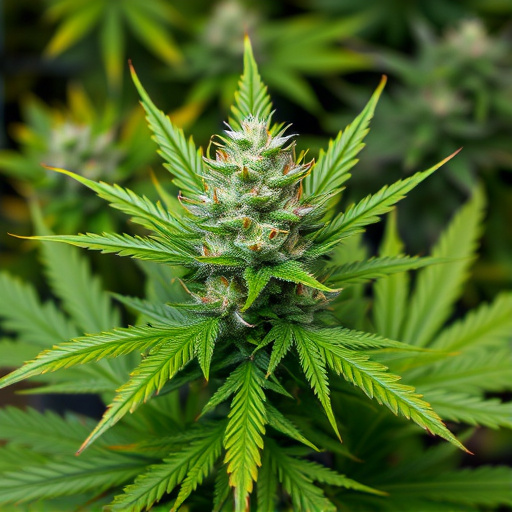Cannabis, through its interaction with the endocannabinoid system, shows promise in treating depression, with compounds like THC and CBD influencing neurotransmitters related to mood. The optimal dosage varies greatly among individuals, depending on factors such as tolerance, strain type (Sativa vs Indica), consumption method, and health status. Starting with small doses and gradually increasing is recommended, while specific strains can offer tailored relief for depression or anxiety. Combining cannabis with a healthy lifestyle and professional guidance from healthcare providers or knowledgeable budtenders is key to managing depression effectively.
Discover the optimal amount of cannabis to alleviate symptoms of depression. This guide explores how different strains and dosage play a crucial role in effective treatment, ensuring both safety and positive outcomes. From understanding cannabis basics to choosing the right strain for your needs, we navigate the world of cannabis for depression. Learn essential tips for safe consumption and find tailored strategies to enhance your well-being.
- Understanding Cannabis for Depression: The Basics
- Factors Affecting Dosage and Strain Selection
- Tips for Safe and Effective Consumption
Understanding Cannabis for Depression: The Basics
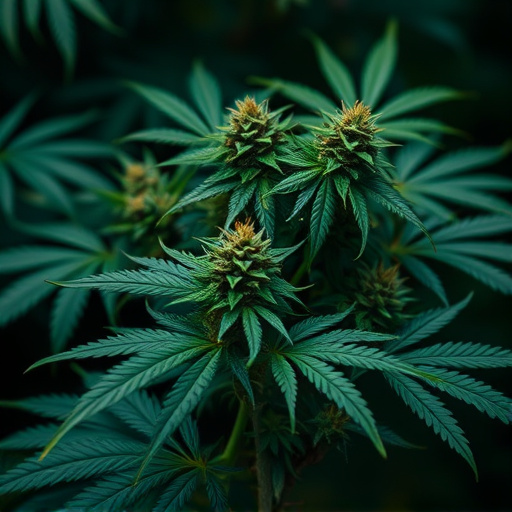
Cannabis has gained attention as a potential treatment option for various mental health conditions, including depression. While it might seem counterintuitive to use a substance to alleviate depressive symptoms, certain cannabis strains are known for their therapeutic effects on mood and emotions. Understanding how cannabis interacts with the body’s endocannabinoid system is essential in navigating its potential benefits for depression.
Depression is often associated with imbalances in neurotransmitters, such as serotonin and dopamine, which regulate mood. Cannabis compounds, including THC (tetrahydrocannabinol) and CBD (cannabidiol), have shown promise in influencing these neurotransmitters. THC is known to interact with cannabinoid receptors in the brain, potentially enhancing feelings of well-being and relaxation. On the other hand, CBD does not produce psychoactive effects but may help reduce anxiety and improve mood by interacting with serotonin receptors. Exploring different cannabis strains, each with unique THC:CBD ratios, can be a way to find relief for depression while managing potential side effects.
Factors Affecting Dosage and Strain Selection

The ideal dosage of cannabis varies greatly from person to person, depending on several factors. One crucial consideration is the individual’s tolerance and experience with cannabis. New users should start with lower doses and gradually increase as they gauge their reaction. Additionally, the strain of cannabis plays a significant role in determining the desired effects. For those seeking relief from depression or anxiety, various cannabis strains known for their therapeutic properties can be beneficial. Sativa strains, for instance, are often recommended for uplifting mood and increasing energy, while Indica varieties are popular for promoting relaxation and alleviating stress.
The method of consumption also influences dosage. Edibles, due to their delayed onset, require more precise measuring, as users may consume too much by accident. Smoking or vaping allows for quicker control over the dose. Moreover, factors like an individual’s weight, metabolism, and overall health can affect how their body processes and responds to cannabis, leading to variations in the effective dosage.
Tips for Safe and Effective Consumption
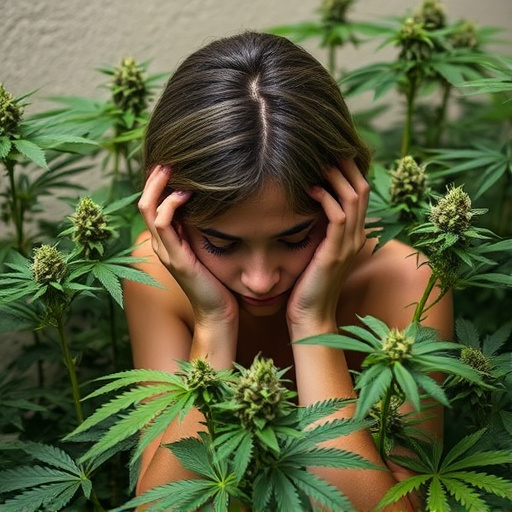
When consuming cannabis, especially for medicinal purposes like managing depression, it’s crucial to start with small doses and gradually increase until you find your ideal amount. This approach allows you to gauge your body’s reaction and ensure safe and effective consumption. Different cannabis strains can offer unique benefits; for depression, indica strains are often preferred due to their relaxing and sedative effects. However, each person is different, so consulting a healthcare professional or a knowledgeable budtender can help guide your selection based on your specific needs.
To maximize the benefits of cannabis for depression, consider pairing it with a healthy lifestyle including regular exercise, adequate sleep, and a balanced diet. Additionally, tracking your intake and mood changes can provide valuable insights into what works best for you. Remember, consistency is key; maintaining a routine with regard to dosage and consumption times can help ensure stability in managing depressive symptoms.
When considering cannabis strains for depression, it’s crucial to remember that everyone’s experience is unique. The optimal amount to smoke depends on individual tolerance, preferred effects, and personal health. Start with low doses and gradually increase until you find the sweet spot that alleviates symptoms without causing discomfort. Always opt for high-quality strains known for their therapeutic benefits, and never hesitate to consult a healthcare professional or cannabis expert for personalized guidance.


